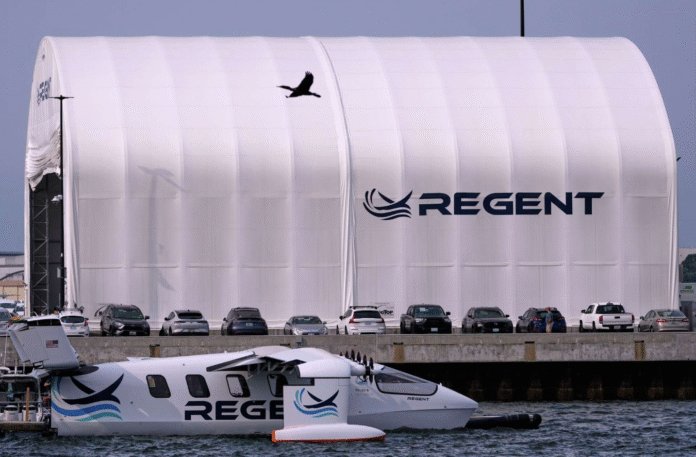Seaglider Ship Innovation for Travelling
The seaglider ship innovation 2025 has the potential to completely reshape the future of transportation and military strategy. Designed by REGENT Craft, this groundbreaking vessel blends the speed of an aircraft with the versatility of a ship, drawing inspiration from the way pelicans and seabirds glide just above the ocean surface. With its unique design, it could revolutionize commercial ferry services while also offering the U.S. military a powerful new asset.
The Birth of Seaglider Ship Innovation
The REGENT Viceroy Seaglider, nicknamed Paladin, is a 65-foot prototype powered by twelve electric propellers. During its recent test runs in Narragansett Bay, Rhode Island, the vessel stunned observers as it hovered above the water like a pelican gliding over waves.
Billy Thalheimer, REGENT’s CEO and co-founder, described his vision:
“We wanted something as fast as a plane but as easy to operate as a boat.”
The Paladin’s design includes three modes of operation: float, foil, and fly. It can rise on hydrofoils, reaching speeds of over 50 mph, before lifting higher into ground-effect flight, cruising 30 feet above the water at up to 180 mph.

This is no ordinary ferry, it’s a futuristic innovation that merges maritime engineering with aviation science.
How the Seaglider Mimics Nature
The seaglider ship innovation 2025 works by exploiting the ground effect the same natural lift phenomenon used by seabirds like pelicans. By skimming just above the waves, the vessel conserves energy while maintaining high speed.
In practice, this means a trip from Rhode Island to New York City, which normally takes three hours by train or longer by car, could be cut down to just one hour.
Commercial Potential of Seaglider Ships
While the technology is still undergoing testing, REGENT has already attracted global interest. Plans are underway for commercial routes in Florida, Hawaii, Japan, and the Persian Gulf.
Backed by major investors such as Mark Cuban and Peter Thiel, the company aims to bring back the glamour of 1930s flying boats but with a modern twist, safe, quiet, and zero emissions.
Mark Cuban explained why he invested:
“Traveling short distances over water is expensive and frustrating. REGENT’s seaglider solves that problem while making it enjoyable.”
With the ability to carry 12 passengers at a time, the Viceroy Seaglider is positioned to compete with ferries, seaplanes, and even short-haul flights.
Military Uses of Seaglider Ship Innovation
The U.S. Marines are also eyeing this seaglider ship innovation 2025 for island-hopping operations across the Pacific. Unlike commercial versions, military models may use jet fuel for longer ranges.
Tom Huntley, who leads REGENT’s defense strategy, explained the potential uses:
-
Troop and cargo transport across islands
-
Covert intelligence collection
-
Anti-submarine warfare
-
Drone and autonomous vessel deployment
What makes the seaglider particularly attractive to defense officials is its ability to fly below radar and above sonar, making it harder to detect.
However, some experts remain cautious. Retired U.S. Navy Captain Paul S. Schmitt raised questions about its range, stability in rough seas, and long-term scalability.
Seaglider vs. Traditional Transport
One major selling point of the seaglider ship innovation 2025 is its efficiency compared to existing transport methods.
-
Versus trains and cars: Travel times are drastically reduced.
-
Versus ferries: It’s much faster and doesn’t face heavy port congestion.
-
Versus planes: It requires less infrastructure and avoids long check-in delays.
In Florida, where driving down Interstate 95 can take nearly a full day, REGENT sees huge opportunities for coastal shuttle routes.

The Future of Seaglider Technology
While still in prototype stage, REGENT’s Paladin has already demonstrated that the concept works. A full-scale manufacturing facility is under construction in Rhode Island, with passenger-ready vessels expected to launch commercially by 2027.
The company is also exploring ways to collaborate with electric hydrofoil startups like Sweden’s Candela and California’s Navier. Instead of competing, they see potential for complementary use, sharing docks and charging systems while serving different trip lengths.
If successful, the seaglider ship innovation 2025 could reshape how people travel across coastlines worldwide, and at the same time, provide the U.S. military with a stealthy, high-speed advantage.

